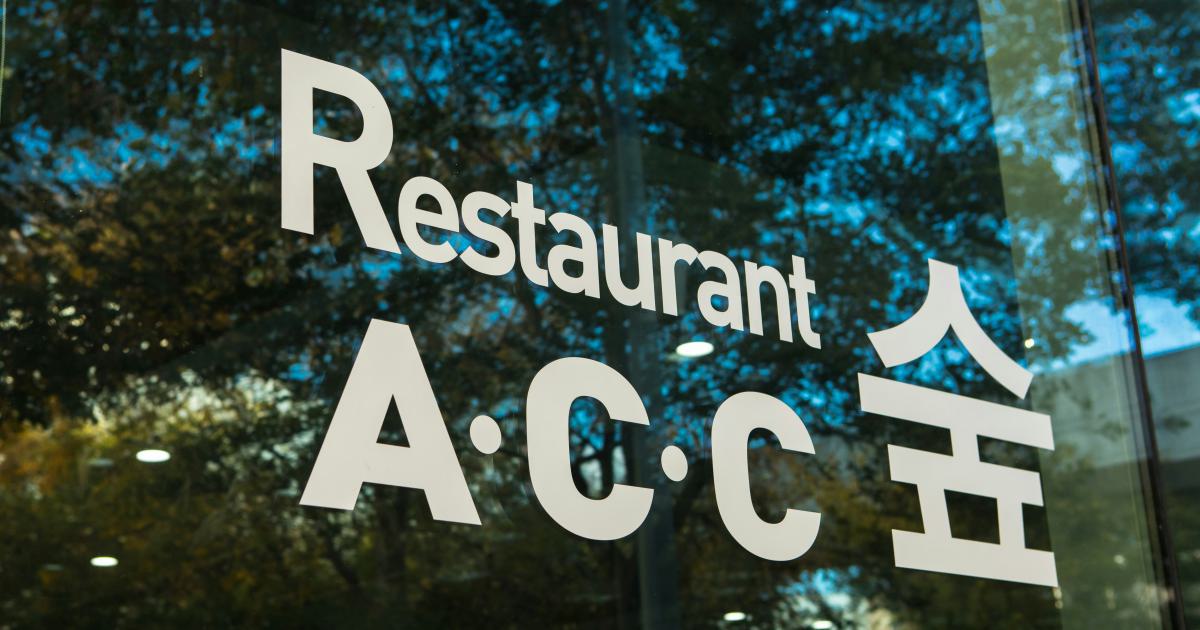Local Online Marketing or Traditional Advertising for Restaurants? Maximizing Exposure


In the ever-evolving world of marketing, restaurants face a critical decision: should they invest in local online marketing or traditional advertising strategies to reach their target audience? As the digital landscape continues to transform the way consumers interact with businesses, it's essential for restaurant owners to understand the advantages and drawbacks of each approach to make an informed decision that will maximize their exposure and drive growth.
The Rise of Local Online Marketing for Restaurants
In recent years, the shift towards online marketing has been undeniable, and the restaurant industry has been no exception. Local online marketing has become a powerful tool for restaurants to connect with their community and target potential customers in a more targeted and cost-effective manner.
The Power of Local Search Engine Optimization (SEO)
One of the key components of local online marketing for restaurants is mastering local SEO. By optimizing their online presence, restaurants can improve their visibility in search engine results when potential customers search for dining options in their area. This includes strategies such as:

- Claiming and optimizing their Google My Business listing
- Ensuring their website is mobile-friendly and loaded with relevant, engaging content
- Building a strong online reputation through positive reviews and ratings
- Leveraging local keywords and geotargeting in their content and meta tags
Effective local SEO can help restaurants rank higher in local search results, making it easier for nearby customers to find and engage with their business.
The Advantages of Social Media Marketing
Another powerful aspect of local online marketing for restaurants is the use of social media platforms. Platforms like Facebook, Instagram, and Twitter provide restaurants with a direct channel to connect with their local community, share engaging content, and build brand loyalty.

Some key benefits of social media marketing for restaurants include:
- Targeted advertising to reach users within a specific geographic area
- Increased brand awareness and visibility through regular content posting
- Fostering customer engagement and relationships through interactive posts
- Leveraging user-generated content, such as customer photos and reviews
By crafting a strong social media presence and leveraging targeted advertising, restaurants can effectively reach and engage with their local customer base.
The Rise of Online Ordering and Delivery
The COVID-19 pandemic has further accelerated the importance of online ordering and delivery for restaurants. Customers have grown accustomed to the convenience of ordering food online and having it delivered directly to their doorstep. Restaurants that have embraced this shift by optimizing their online ordering systems and partnering with delivery services have been able to maintain and even grow their customer base during challenging times.

Investing in a user-friendly online ordering platform and establishing partnerships with popular delivery services, such as Uber Eats, DoorDash, or GrubHub, can help restaurants:
- Expand their customer reach beyond their physical location
- Provide a seamless and convenient ordering experience for customers
- Gather valuable data on customer preferences and purchasing habits
- Increase revenue through increased order volume and average order size
By adapting to the growing demand for online ordering and delivery, restaurants can stay competitive and meet the evolving needs of their local customer base.
The Enduring Power of Traditional Advertising for Restaurants
While the rise of local online marketing has undoubtedly transformed the restaurant industry, traditional advertising strategies still hold significant value and should not be overlooked.
The Continuing Relevance of Print Advertising
Despite the increasing dominance of digital media, print advertising remains a viable option for restaurants looking to reach their local community. Print ads in newspapers, magazines, or local directories can provide a sense of legitimacy and trustworthiness that can be difficult to achieve through digital channels alone.

Some advantages of print advertising for restaurants include:
- Targeted distribution to specific geographic areas or demographics
- Increased credibility and perceived authority through print media placement
- Potential for longer-lasting visibility compared to digital ads
- Ability to showcase high-quality imagery and detailed information about the restaurant
By strategically placing print ads in local publications, restaurants can complement their online marketing efforts and reach a wider audience within their community.
The Importance of Outdoor Advertising
Outdoor advertising, such as billboards, bus benches, or signage, can also be an effective traditional marketing strategy for restaurants. These physical, high-visibility placements can help attract the attention of potential customers as they go about their daily routines.

Key benefits of outdoor advertising for restaurants include:
- Increased brand awareness and recognition within the local area
- Ability to target specific high-traffic locations or commuter routes
- Potential for long-lasting impressions and repeat exposure
- Opportunities for creative, eye-catching designs that stand out
By carefully selecting the placement and design of their outdoor advertising, restaurants can effectively complement their online marketing efforts and reach a wider audience within their community.
The Power of Community Involvement and Sponsorships
In addition to traditional advertising channels, restaurants can also leverage their local community connections and involvement to drive brand awareness and customer engagement. This can include sponsoring local events, supporting charitable organizations, or partnering with community groups.

Engaging with the local community can provide restaurants with numerous benefits, such as:
- Building strong relationships and trust within the community
- Generating positive publicity and word-of-mouth referrals
- Demonstrating a commitment to social responsibility and giving back
- Opportunities for cross-promotion and increased visibility
By actively participating in and supporting their local community, restaurants can differentiate themselves from competitors and position themselves as an integral part of the neighborhood.
Balancing Local Online Marketing and Traditional Advertising
As restaurants navigate the ever-changing marketing landscape, it's essential to strike a balance between local online marketing and traditional advertising strategies. By leveraging the strengths of both approaches, restaurants can maximize their exposure and reach their target audience more effectively.
Developing an Integrated Marketing Strategy
The most successful restaurants often employ a comprehensive, integrated marketing strategy that seamlessly combines local online marketing and traditional advertising tactics. This approach ensures a consistent brand message and a cohesive customer experience across all touchpoints.

An integrated marketing strategy for restaurants may include:
- Optimizing their website and online presence for local SEO
- Developing a robust social media presence and running targeted social media campaigns
- Leveraging online ordering and delivery platforms to reach a wider customer base
- Strategically placing print ads in local publications
- Investing in high-visibility outdoor advertising placements
- Actively participating in and sponsoring community events and organizations
By aligning their online and offline marketing efforts, restaurants can create a more impactful and memorable brand experience for their customers.
Analyzing Data and Adjusting Accordingly
Effective marketing for restaurants requires ongoing monitoring, analysis, and adjustment. By closely tracking the performance of their local online marketing and traditional advertising efforts, restaurant owners can make informed decisions about where to allocate their resources for maximum impact.

Key metrics to consider include:
- Website traffic and engagement
- Social media reach, engagement, and conversion rates
- Online ordering and delivery sales
- Coupon redemption or special offer usage from print and outdoor ads
- Customer feedback and reviews
By regularly reviewing and analyzing these metrics, restaurants can identify the most effective marketing channels, refine their strategies, and continually optimize their approach to reach and engage their local customer base.
Leveraging Expertise and Partnerships
Given the complexity of the modern marketing landscape, many restaurants may benefit from partnering with marketing agencies or consultants who specialize in the restaurant industry. These professionals can provide valuable expertise, insights, and resources to help restaurants develop and implement a comprehensive, data-driven marketing strategy.

Some key advantages of working with marketing experts include:
- Access to the latest industry trends, best practices, and effective strategies
- Assistance in creating a cohesive brand identity and messaging
- Guidance in optimizing online presence, including website and social media
- Support in planning and executing traditional advertising campaigns
- Ongoing performance monitoring and data-driven optimization
By leveraging the expertise of marketing professionals, restaurants can enhance their marketing efforts, stay ahead of the competition, and more effectively reach and engage their local customer base.
Conclusion
In the dynamic world of restaurant marketing, the decision between local online marketing and traditional advertising strategies is not a simple one. Restaurants must carefully evaluate the unique needs and characteristics of their business, their target audience, and their local market to determine the optimal approach.
By embracing the power of local online marketing, restaurants can leverage the growing digital landscape to connect with their community, improve their visibility, and provide a seamless customer experience. At the same time, traditional advertising channels like print and outdoor ads, as well as community involvement, continue to play a vital role in building brand awareness and fostering customer loyalty.
The most successful restaurants will be those that strike a strategic balance between these two marketing approaches, creating an integrated and data-driven strategy that maximizes their exposure and drives long-term growth. By staying agile, adaptable, and attuned to the evolving needs of their local customers, restaurants can navigate the ever-changing marketing landscape and position themselves for sustained success.